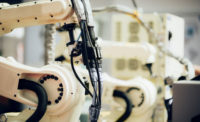Report from 2015
How system think can change safety

National Transportation Safety Board (NTSB) Chairman Christopher Hart opened his speech at Safety 2015 by thanking the American Society of Safety Engineers (ASSE) for supporting two important initiatives: changing the impaired driving limit from .08 to .05, and banning the use of personal electronic devices while driving.
With that out of the way, Hart launched into an explanation of transportation systems, which are interdependent and complex, continuously changing due to high-tech innovations and generally tightly coupled.
Safety issues, said Hart, are more likely to involve interactions between parts of the system. The effects of increasing complexity mean that systems are more likely to be error prone; operators are more likely to encounter unanticipated situations; and those situations may mean that “by the book” responses are not optimal.
Highly trained, competent people still make mistakes, said Hart.
He went on to explain that “system think” means understanding how subparts interact with and affect each other. Instead of focusing on the person who made the mistake or the system it was made in, system think involves examining the interaction between the two.
The objectives of system think:
- Make the system less error prone
- Make the system better able to tolerate errors
- Instead of blaming individuals, design safety into the system
A major source of information for system think is front-line employees, who often know about problems before they cause accidents. However, they are frequently afraid to report problem for fear of retribution – such as losing their jobs.
Hart said a major paradigm shift is needed, from regulators identifying problems and skeptical industries resisting the regulators’ solutions to a new, collaborative system think that involves industry in the problem identification process, and evaluating interventions and tweaking them when needed.
There are challenges in the collaborative process, said Hart:
- Human nature often shifts the blame to others
- Participants may have competing interests. “We’re asking these guys with competing interests to play in the sandbox together, and that’s a huge challenge,” said Hart.
- The regulator is not welcome
- The fact that the process is not a democracy (the regulator must regulate)
- It requires all to be willing – in their enlightened self-interest – to leave their comfort zone and think of the system.
Can the collaborative approach apply to workplace safety?
Hart cited aircraft manufacturers who have increasingly sought input through the design process from pilots, mechanics and air traffic controllers. The result: improved safety and productivity without new regulations.
Looking for a reprint of this article?
From high-res PDFs to custom plaques, order your copy today!







